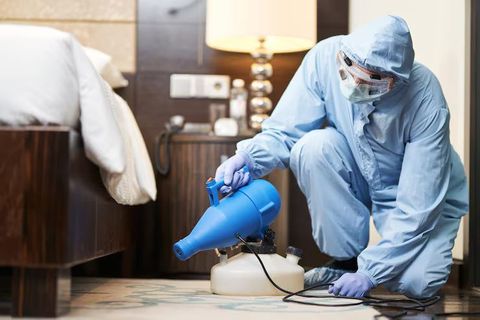Industrial Flot Level Sensor: Complete Guide, Basics, and Key Insights
An industrial float level sensor is a device used to measure the level of a liquid inside a tank, vessel, or container. It typically works using a buoyant float that rises and falls with the liquid. As the float moves, it triggers a switch or sensor mechanism to indicate the current level.
These sensors exist because many industrial processes require reliable detection of minimum or maximum liquid levels — for example, to avoid overflow, prevent a pump from running dry, or maintain consistent chemical proportions. Float level sensors are relatively simple, mechanical, and cost‑effective compared to more complex technologies.
Importance: Why Industrial Float Level Sensors Matter Today
Key Roles They Play
-
Safety: Preventing spills or overflows avoids environmental damage, hazards to workers, or costly product losses.
-
Process Control: Ensuring the right liquid level is crucial for processes like chemical reactions, storage, or mixing.
-
Automation: Float sensors integrate into control systems to automate pump operations or alarms.
-
Cost Efficiency: Simple mechanical designs often mean lower maintenance and longer life if properly installed and maintained.
Who It Affects
-
Manufacturing Plants: Chemical, pharmaceutical, food & beverage, and oil & gas industries rely on level monitoring.
-
Water Systems: Utilities and water treatment plants use float sensors to manage tank levels.
-
Infrastructure: Storage for fuels, chemicals, or raw materials in industrial storage tanks.
-
Maintenance Teams: Technicians benefit from reliable, low‑complexity sensors for routine monitoring.
The demand for such sensors is growing, with global market projections showing steady expansion. Non‑contact level sensor technologies (ultrasonic, radar) are also seeing rapid industrial adoption.
Recent Updates: Trends and Developments
-
Market Growth: The global level sensor market is forecast to grow strongly over the next decade.
-
Float Sensor Market Dynamics: Electric float sensors are expected to experience significant growth in industrial applications.
-
Smart / IoT Integration: Manufacturers are embedding diagnostic functions and wireless connectivity in float sensors, aligning with digital transformation in industry.
-
Non-Mechanical Alternatives Rising: While float sensors remain important, non-contact technologies (ultrasonic, radar) are capturing more of the market — especially in applications where physical contact is problematic.
-
Sustainability Focus: Sensor makers are exploring eco‑friendly materials for float sensor components to reduce environmental impact.
Laws or Policies: Regulatory Considerations
-
Industrial Safety Regulations: Facilities must comply with safety norms to prevent overflow, leaks, or hazardous incidents. Liquid level monitoring is often part of broader safety and environmental compliance.
-
Environmental Standards: Accurate level sensing helps avoid spills and align with regulations on hazardous material storage.
-
Hydrometry / Water Measurement Rules: Design manuals specify precision and mounting norms for float‑type systems in water and reservoir monitoring.
-
Hazardous Locations: When float sensors are used in potentially explosive or flammable environments, they must follow electrical safety standards. Explosion-proof or intrinsically safe sensor designs are required.
Tools and Resources
-
Installation & Maintenance Guides: Manuals explain how to mount float switches, maintain floats, and troubleshoot.
-
Design Guidelines: Technical design sheets show how to choose float material, stem spacing, and compatibility.
-
Hazardous‑Area Guidance: Documentation helps users select sensors certified for flammable or explosive environments.
-
Market Reports: Research reports provide data and forecasts for the float sensor market.
-
Sensor Monitoring Tools: Wireless or IoT-enabled level sensors often come with dashboards, mobile apps or cloud platforms for real-time monitoring.
-
Educational Materials: Online technical sheets, webinars, and whitepapers help engineers understand float sensor selection, calibration, and common errors.
Frequently Asked Questions (FAQs)
Q: How do float level sensors differ from non-contact sensors?
A: Float level sensors use a physical float that moves with the liquid’s surface, activating a switch. Non-contact sensors (ultrasonic, radar) measure from a distance without touching the liquid.
Q: What kind of maintenance do float sensors need?
A: Regular inspection is needed to check for buildup, debris, or corrosion. Clean the float and stem, and test the switch operation using an ohm meter or continuity tester.
Q: Can float sensors work in hazardous or explosive environments?
A: Yes — but sensors must be certified for such zones. They may need to be explosion-proof or intrinsically safe.
Q: What design considerations are important when choosing a float sensor?
A: Critical factors include clearance between float and stem, float buoyancy relative to liquid density, material compatibility, and switching margin to avoid rapid on/off chattering.
Q: Why are float sensors still relevant if non-contact sensors are growing?
A: Float sensors are simple, reliable, and cost-effective. They work well in many standard liquid-level applications and often require less maintenance or calibration than more advanced sensors.
Conclusion
Industrial float level sensors remain a foundational tool for measuring liquid levels across many sectors. Their simplicity and reliability make them a go-to option for safety, process control, and automation. As industrial ecosystems evolve, float sensors are adapting — integrating IoT features, using sustainable materials, and coexisting with newer non-contact technologies.
By understanding how they work, how to design and maintain them, and how regulations apply, engineers and operators can make informed decisions. Float level sensors continue to be relevant for safe, efficient, and future-ready industrial operations.






